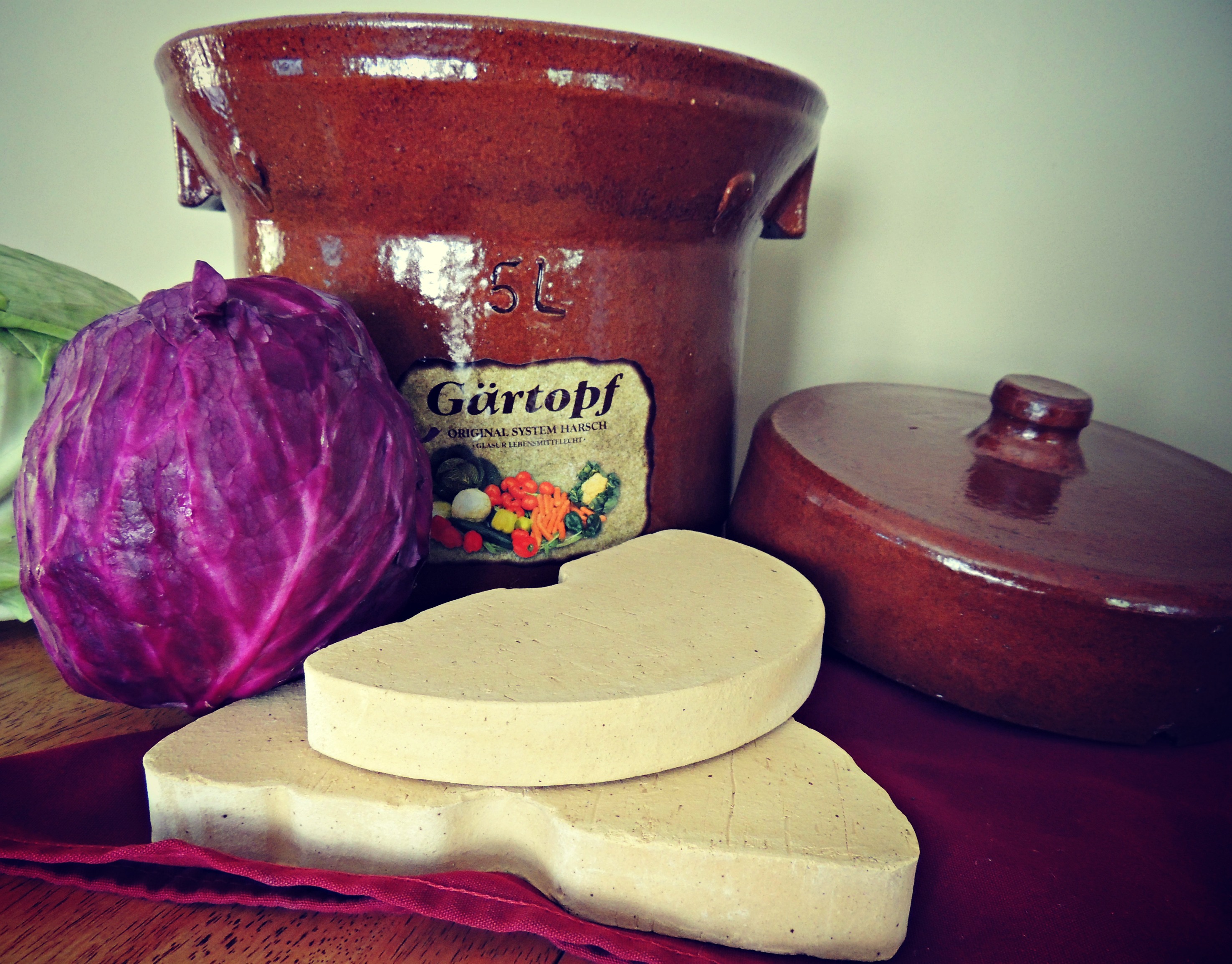Most people find the idea of making fermented vegetables at home intimidating. Hygiene obsessed, our society has built-up an intense fear around doing anything with (gasp) bacteria! The bubbles, the smells- I completely understand. For a long time in my traditional cooking practice I avoided doing any of my own fermentation, instead sneaking measely scoops of sauerkraut and samples of cultured condiments from my more experienced and wiser friends whenever I could. However, it turns out that fermentation is actually extemely simple (and even enjoyable) to do! All it really takes is some getting started. And as for the myths about poisoning yourself with evil bacteria from cabbage-gone-wrong, trust me- you will know if something isn't quite right and then you just try again. I have found that with the right gear it is nearly impossible to mess up, and you can fall into a rhythm of having some kind of nutrient-dense deliciousness abrewing nearly all the time. Enjoy this easy five step recipe for classic raw sauerkraut using a fermenting crock.

When making sauerkraut, or any fermented dish for that matter, absolute purity and cleanliness is key. This rule stands for both the ingredients and the vessel they will be fermented in. By selecting only the most beauitfully robust and organic vegetables, as well as an impeccable mineral-rich salt and purified water (chlorine wreaks havoc with the fermentation process), your ferments will be delicious tasting nutrient powerhouses. While people use a range of containers in which to store fermenting vegetables- everything from plastic buckets to mason jars- traditional stoneware crocks are truly the gold standard. Although somewhat less common to find and a bit more pricey than alternatives, they follow an elegant age-old design with features that enable large quanitities of vegetables to be fermented cleanly and effectively. The Original Harsch Stoneware Fermentation Pot includes a lid with an air-tight water sealing system and a two-piece weighting stone that applies the proper pressure for fermentation. This particular patented crock is made of stoneware, baked at 2200° and covered with a lead-free glazing. It wipes clean easily and hardly absorbs any water, thus preventing mold and film-forming yeasts which can significantly alter the preservability of the vegetables. Making fermented vegetables is so awesome that I recommend getting started with whatever means you have. But if you are seriously considering making fermented vegetables on a regular basis, a high-quality stoneware crock is a beautiful piece of equiptment you may want to invest in.
Basic Raw Sauerkraut Recipe
1. Remove outer wilted leaves and center stalk from the cabbage. Be sure to save the large outer leaves as you will be using them later. With a knife or a food processor, chop or shred the cabbage into a large dish. The cabbage can be shredded finely or coarsely, according to your sauerkraut munching preference.
2. Measure out your sea salt and place aside in a small dish. In general, you will want to use about 3 tablespoons of
high quality salt for every 5 lbs of cabbage.
3. Place one layer of the shredded cabbage into the fermenting crock, add some of the salt and stamp down firmly (using fist or pressing with a flat tool such as a potato masher). Continue to press until the juice (or cell sap) is released from the cabbage. Depending on the age of the cabbage that you are using, it may take some time for the salt to draw out the juice. Repeat this process of layering cabbage, salting and pressing until the crock is filled to 4/5 of the way to the top at maximum.
4. Take 2 of the large outer cabbage leaves which you saved from before and lay them over the cabbage and juice. Next, place the two weighing stones into the crock, pressing them down slightly so that the juice begins to rise. If there is not at least 3-5 cm of the juice and salt brine covering the weighting stones, pour some boiled and cooled salt water (make it at a concentration of about 2 1/2 tsp per 1 L of water) into the crock such that the stones are submerged.
5. Place the lid securely onto the crock and fill the surrounding water groove. This creates an incredible airtight seal that allows the lactic acid to work to its maximum capacity without the formation of undesirable film-forming yeast.

Your work is now mostly done! Time to relax and let those busy microbial organisms do their work. Leave the crock at room temperature (about 68°-72° F) for about 2-3 days. During this time, you will begin to notice a pleasant gurgling or bubbling sound. No, its not the faucet dripping again...this funny sound is a sign that the fermentation has started. At this point, move the crock into a cool place in your home, somewhere that stays bewteen about 60°-64° F. Although it is tempting to take a peek at your sauerkraut experiment to monitor the fermenting process, it is important that the lid of the crock pot stay put until adequate fermentation has taken place. Also be sure to monitor the level of the water seal as it may evaporate during this time. Take care to add water as needed so that the seal remains intact and no dust, molds or other undesirable items find their way in.
Within 4-6 weeks, your wonderfully pure sauerkraut will be ready for eating. Check back with us to see our final product too!






